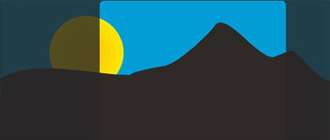Pan and Scan

Modification of a widescreen movie to fit the (now older) TV Aspect Ratio of 4:3, or the (current norm) HDTV aspect ratio of 16:9.
This is done by isolating a viewing window within the original frame, then cutting and "panning" said window back and forth to follow the action on the screen; this has the natural side effect of "slicing off" a large portion of the original frame (up to 50 or 60 percent).
Since the pan looks entirely unlike a camera move, it can be very jarring for the viewer. With the growing acceptance of the 16:9 (or 'letterbox') ratio, publishers have differentiated the formats with pan and scan being marketed as "fullscreen" while letterboxed editions are "widescreen."
For many directors, this is something of a minor (or major) Berserk Button, since this means a technician has to, according to some, redirect the film, and will frequently lose either important details, or the ambiance of a scene or a whole movie. TCM made a quick documentary with several famous directors talking about the downside of Pan and Scan (it's only 5 minutes, give it a watch.)
Contrast Letterbox, Visual Compression, Widescreen Shot.
Due to the ubiquity of this device, only Lampshade Hangings or other unusual examples should be listed.
- This GIF [dead link]
showing how a Pan & Scan of Seven Brides for Seven Brothers progressed will probably help you.
- The Die Hard DVD contains a featurette giving a very good illustration of the differences between letterbox, "centre-scan" and pan-and-scan.
- Parodied in a Benny Hill Show sketch in which a technician attempting to pan and scan a movie in real time manages to miss all of the important details.
- Same kind of thing, but not a parody. The operator apparently forgot the "pan" part and simply took the center of the scene.
- Sadly, upon 16:9 TVs coming into popular use, some presentations of material originally filmed for 4:3 sets is now being cropped the other way on HDTV channels I (pan and tilt). Will they never learn? Victims of this process for Blu-Ray include Thunderbirds and the classic documentary series The World at War.
- Inverted with most of the earlier animated films by Pixar (later films, such as Cars and WALL-E are all shown only in widescreen): Rather than cropping the edges and showing only the major elements of their films, they actually moved certain characters and objects either toward the center of the screen or off to the side in order to preserve the film's original quality. One of the most obvious examples of this is a particular scene from A Bugs Life where they show two young ants climbing up a leaf: In the original widescreen version, you couldn't see the second ant at all, but in the fullscreen version, you actually do.
- Another obvious example from a Pixar movie appears to be a blink-and-you'll-miss-it moment that happens toward the end of Finding Nemo during the Aquascum scene (it's right when Gill says "False alarm!").[1]
- Played straight with most Disney animated films, but inverted in Brother Bear where the film actually starts out in fullscreen, but switches to widescreen just right after Kenai turns into a bear.
- The music video for R.E.M's "Imitation Of Life" was designed around this: the entire video is just one looping 20-second take, with pan-and-scan used to zoom in on individual parts of the scene.
- In the commentary for Ghostbusters, during the lobby scene at the Sedgwick Hotel, Harold Ramis laments that he's frequently chopped out of the picture entirely in pan-and-scan presentations due to his not having many lines in that shot.
- Some channels air movies with the picture cropped down to fill an HDTV screen. As a result, SDTV viewers watch a letterboxed version of the movie, albeit one that still doesn't show the complete picture.
- Taken Up to Eleven in the case of some channels that still have pan & scan copies of some films and keep their High Def feeds horizontally stretched regardless if the content is 4:3 or not. So you end up watching a movie that has been cropped to fit the old style televisions, then distorted sideways in order to fit the new style of televisions.
- ↑ It's a brief glimpse of a female patient in the dentist's waiting room, the visible portion of her legs were only seen in the fullscreen version of the film